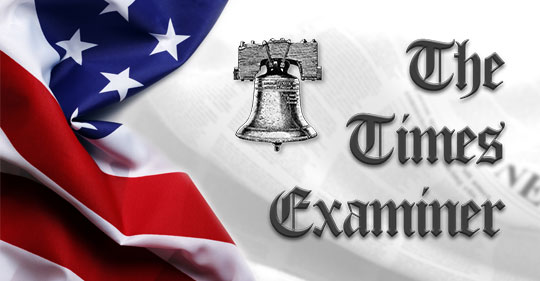The Heroic Saga of the CSS Alabama, CSS Florida, and CSS Shenandoah

Confederate Navy Captain James D. Bulloch, the Confederate government agent who coordinated and supervised the building and launching of the Confederate cruisers Alabama, Florida, and Shenandoah in Liverpool is not a household name among Civil War buffs, but his accomplishments in building a formidable Confederate fleet of commerce raiders in England must be ranked among the most remarkable achievements for the Southern cause.
In October of 1862, Secretary of the Navy Gideon Welles was in a state of apprehension and baffled frustration. In this, he was joined by President Lincoln, Secretary of War Stanton, and many high-ranking officials in Washington. In only two months since the British-built Confederate cruiser, the CSS Alabama, slipped out of Liverpool on her maiden voyage, she had wreaked havoc on the U.S. merchant and whaler fleets in the North Atlantic. In September, she had captured and burned ten U.S. commercial vessels. On October 3, the Alabama took two more prizes in a single day. The Emily Farnham was carrying English cargo and was therefore released on bond. The 839-ton Brilliant was carrying U.S. cargo from New York to London, so after her crew, passengers, and supplies were taken aboard the Alabama, the magnificent two-year-old ship was set ablaze at sea.
By early 1863, the reputation of the Alabama was reaching mythical proportions in the Northern press. She appeared everywhere and anywhere, burning and sinking one Yankee merchant ship after another. Consequently, Navy Secretary Gideon Welles had 18 of the Navy’s most formidable warships in pursuit of the Alabama. But where was she? The Alabama would appear out of nowhere, running up her Confederate ensign for the pursuit and capture of yet another Union prize.
When the Alabama captured the Ariel, carrying 140 U.S. Marines and gold from Panama to New York, such gold shipments fell 70 percent. The capture of 140 Marines was, of course, an extreme embarrassment for the Navy Department. Then the Alabama unexpectedly arrived off Galveston and easily sank the Union Navy gunboat Hatteras. In addition, a new Confederate cruiser, the Florida, began marauding in the Gulf.
On March 2, the Alabama captured and burned the John A. Parks out of Maine. From Northern newspapers confiscated from her captain, Semmes and his crew learned that the Florida, the second Confederate cruiser built by the British in Liverpool under the supervision of James Bulloch, had burned the Jacob Bell and a cargo valued at $1.5 million, the largest trophy of the entire war.
$1.5 million was a lot of money back then. Adjusting for inflation to 2025, that would be at least $30 million.
The officers of the British-built Confederate cruisers were mostly Confederate Navy personnel, but their crews were largely British volunteers. Late in the war, the Alabama and the Florida would be joined by a third Confederate Cruiser launched from Liverpool on August 17, 1863, the Shenandoah. When the Shenandoah finally lowered her ensign at Liverpool on November 6, 1865, more than six months after Lee’s surrender at Appomattox, she had burned, captured, or bonded 38 U.S. merchant and whaling ships.
Because the war was going badly in 1864, the South had fewer open friends. Under U.S. pressure, British ports were beginning to be less open to Confederate ships. By late May 1864, the Alabama was badly in need of more than two months extensive repair, including overhaul of her boiler, repair work to her structure, and replenishing of ammunition and supplies. Semmes decided to head to the French port of Cherbourg in Normandy. Emperor Louis Napoleon was sympathetic to Southern independence, and the Florida and the Georgia had recently found refuge and repair facilities at French ports. The CSS Georgia had been acquired from the British Navy in Scotland in April 1863 by the Confederate Navy. It destroyed nine U.S. merchant ships before being captured in August 1864.
On June 10, 1864, the Alabama entered the port of Cherbourg. There was little chance of it remaining a secret. Within hours the U.S. minister in Paris, William Dayton, sent a telegram to the Union gunboat Kearsarge, cruising off the Dutch port of Flushing. By late morning of June 14, the Kearsarge, commanded by Captain John A. Winslow, had also arrived at Cherbourg. The rules of neutrality forbade combat in French waters, but Winslow intended to engage and sink the Alabama if she attempted to leave Cherbourg.
At the time she arrived in Cherbourg, the Alabama had burned 52 Yankee merchant ships and whalers and had bonded, ransomed, sold, or put into Confederate service 12 more. She had also sunk the Union gunboat Hatteras off Galveston for a total of 65 “prizes.” Because of the increased risks and costs she posed to U.S. merchant shipping, over 900 U.S. merchant ships were sold to foreign owners, mostly British. She had also seized more than $5 million of U.S. shipping cargos (a vast amount of money back then—at least $100 million in 2025. The Alabama, Florida, and associated Confederate cruisers helped reduce the effectiveness of the Union blockade of Southern ports by about 50 percent.
After 22 months at sea, the Alabama’s poor condition and less reliable (often damp) ammunition versus the Union ship’s better protected hull and two huge Dahlgren guns made the contest somewhat uneven. The dauntless Semmes, however, realizing the urgency of the Confederate cause, hoped that by out-maneuvering the Kearsarge he could avoid serious damage from the Dahlgren guns. If he could disable her cannons on one side, Semmes planned to take the Kearsarge by boarding her and subduing her crew by pistol and cutlass in hand-to-hand combat. Then he might switch ships and go back to sea with a combat ready vessel. It was a bold, perhaps desperate plan, but it fit the Southern tradition and necessity for daring invention and improvisation.
About 9:00 AM, June 19, the Alabama, with more than 1,300 French spectators watching from the shore, departed from Cherbourg for open water. The Kearsarge headed straight for her. I have described the details of the battle in parts 3 and 4 of 5, in my Times Examiner series, Find the Alabama, in December 2017.
The bottom line is that after a fierce battle the Dahlgren guns prevailed, and the Alabama went down. Of approximately 140 officers and crew, 28 were lost, 57 were rescued by the Kearsarge and became Union POWs, and 55 were rescued by the British steam-yacht Deerhound and taken to England for a comfortable recovery and return to Confederate service. Semmes and 13 of his officers were among those rescued by the Deerhound. A few of these later served on the Shanandoah. Only the Assistant Surgeon David Llewellyn was lost. Llewellyn had heroically refused to leave the ship until he was certain that all wounded men had been put aboard a lifeboat. Llewellyn, who could not swim, was a British subject dedicated to the Confederate cause.
The Alabama’s record as the most successful commerce raider in naval history still stands notwithstanding German submarine warfare in two world wars. During the Battle of the Atlantic from 1939 to 1945, 863 operational German submarines sank 2,827 allied merchant ships. Allied shipping losses totaled about 3,500 from all enemy causes, resulting in a loss of over 30,000 men. The German U-Boat Captain who sank the most allied ships was Otto Kretschmer with 47. Wolfgang Luth was a close second with 46. Eight other German submarine commanders sank 26 to 35 allied ships. The Alabama, in contrast, destroyed 53 Union ships and spared 12 more for various reasons, bringing her total prizes to 65. As Captain of the CSS Sumpter, the first Confederate commerce raider, Raphael Semmes, had taken 19 prizes. Except for sinking the Union warship Hatteras, there was no loss of life. (Such chivalry is not usually a practical option in submarine warfare, but some German submarine commanders made successful attempts, including Otto Kretschmer above.) The CSS Shanandoah with 38 prizes beat all but two German submarines. The CSS Florida also beat all but two German submarine with 37, but it is sometimes credited with 60, because two of her prizes were converted to commerce raiders, and these, the Tacony and Clarence, took 23 more prizes.
The last line of a well know sea shanty, Roll Alabama Roll, is
“Off the three mile limit in ’64, the Alabama was seen no more.”
There is, of course, much more to be told of several of the Confederate commerce raiders, especially the CSS Florida. On February 27, Joe Long will be the speaker at the Sons of Confederate Veterans meeting of the 16th Regiment of South Carolina volunteers Camp 36 in Greenville, SC. His topic will be:
John N. Maffett and the CSS Florida
February 27, 2025, Thursday, Time 6:30 PM
Fire Station #4 Training Building
208 Blacks Drive, Greenville, SC 29615
Dinner is $15 (to cover meal and facility rental)
Contact: Bob Dowd (864) 483-2629









 Mike Scruggs is the author of two books: The Un-Civil War: Shattering the Historical Myths; and Lessons from the Vietnam War: Truths the Media Never Told You, and over 600 articles on military history, national security, intelligent design, genealogical genetics, immigration, current political affairs, Islam, and the Middle East.
Mike Scruggs is the author of two books: The Un-Civil War: Shattering the Historical Myths; and Lessons from the Vietnam War: Truths the Media Never Told You, and over 600 articles on military history, national security, intelligent design, genealogical genetics, immigration, current political affairs, Islam, and the Middle East. 


